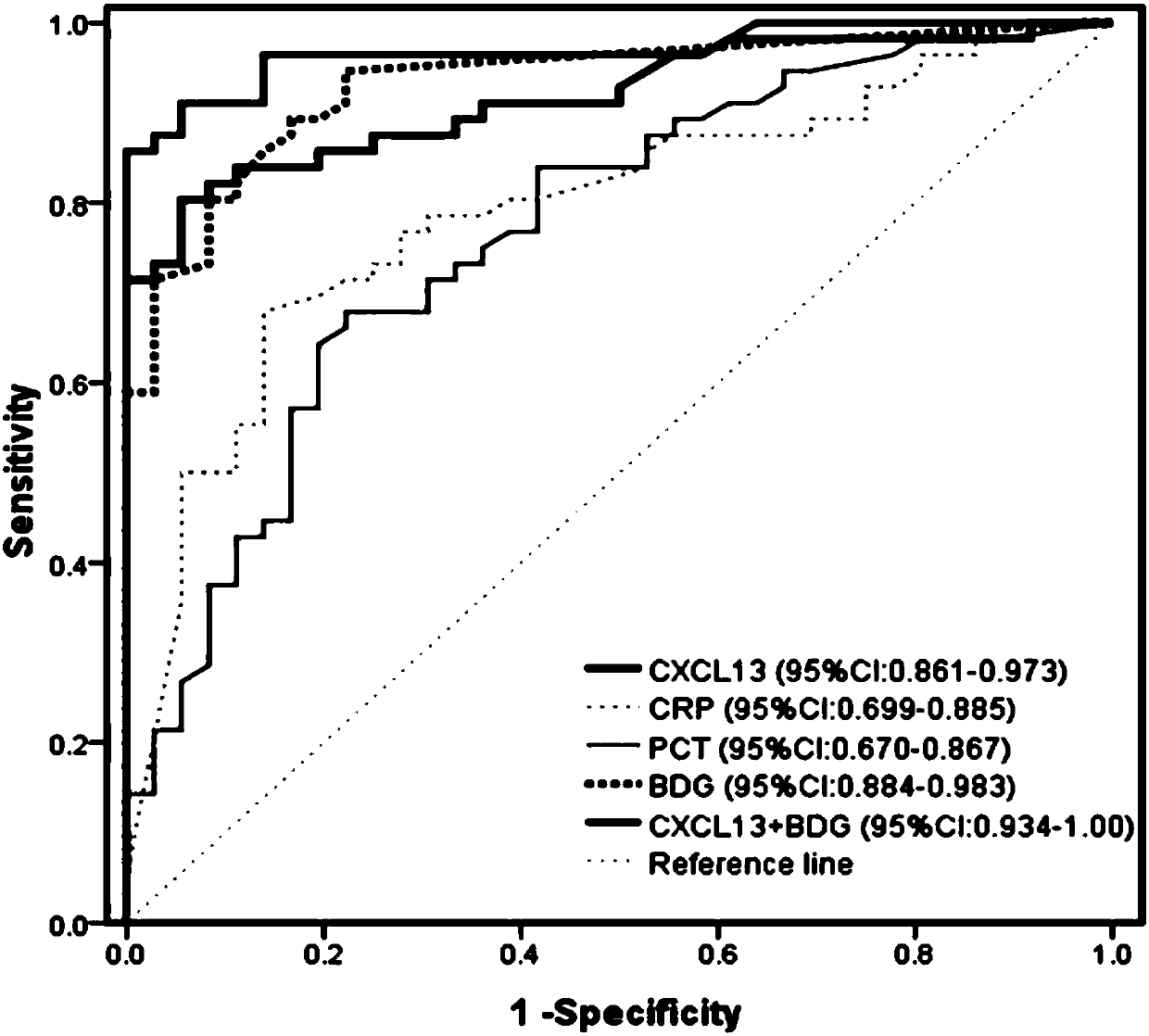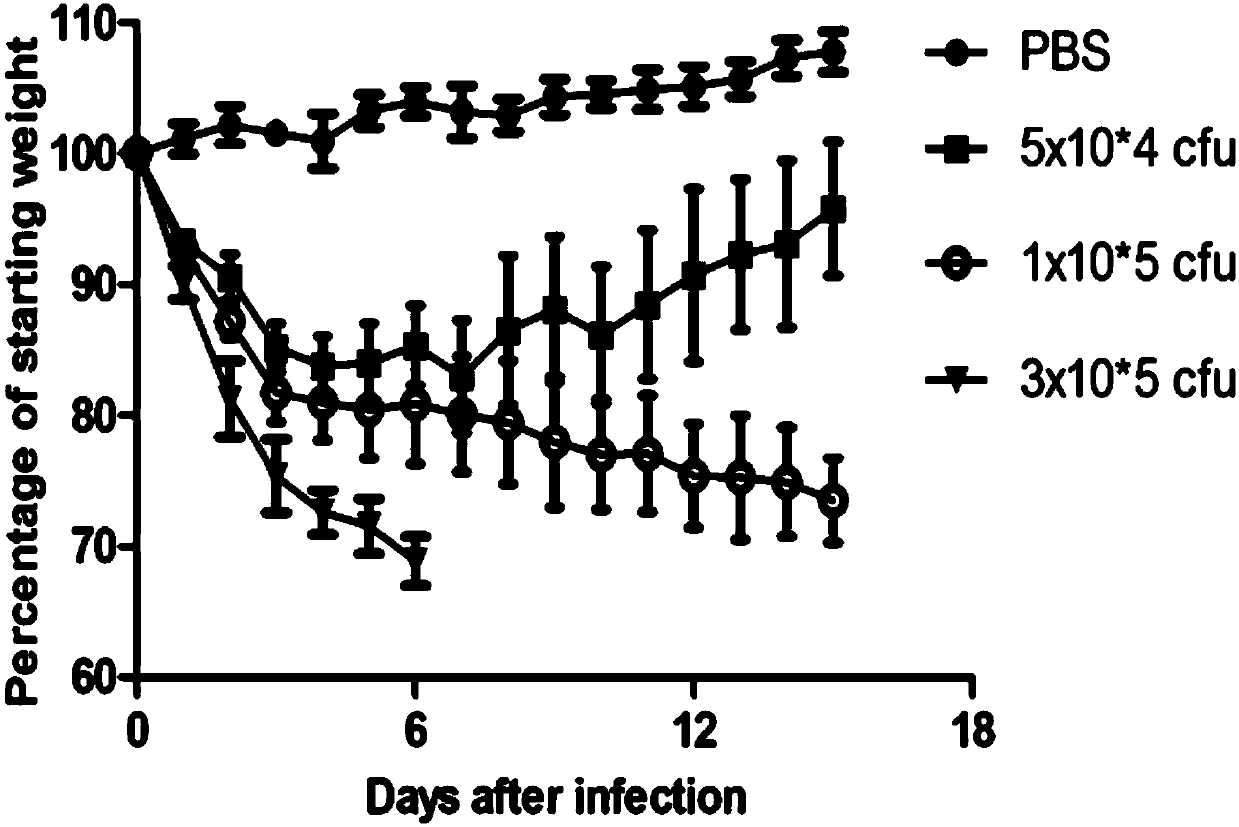Use of CXCL13 as biomarker in diagnostic reagent
A technology of biomarkers and diagnostic reagents, which is applied in the field of preparation or screening of diagnostic reagents for Candida infection, and can solve problems such as the inapplicability of diagnostic methods to clinical applications
- Summary
- Abstract
- Description
- Claims
- Application Information
AI Technical Summary
Problems solved by technology
Method used
Image
Examples
Embodiment 1
[0034] Detection of Serum CXCL13 in Patients with Bloodstream Infection
[0035]The blood samples of clinical patients are tested for relevant pathogens by the microbiology room of the laboratory department. After the test is completed, the serum samples of the patients on the day of submission are collected. At the same time, the serum samples of patients with negative pathogen tests are collected as controls, and they are immediately stored in a -80°C refrigerator. For subsequent experiments. All patients were divided into 3 groups: candidemia group (candidemia group), bacteremia group (bacteremia group) and pathogen detection negative group (Control group), ELISA method was used to detect 56 candidemia patients, 56 bacterial The sera of patients with hyperemia and 36 patients with negative pathogen tests were collected. In addition, patients with cancer, autoimmune diseases and other acute infections that affect the expression of CXCL13 were excluded. The human CXCL13 ELIS...
Embodiment 2
[0038] ROC curve analysis compared the diagnostic performance of serum CXCL13, BDG, CRP and PCT in invasive candida infection.
[0039] The laboratory indicators of the candidemia group and the control group were collected through the laboratory LIS system, including G test (BDG), CRP and PCT. Use SPSS19.0 software to make ROC curve, and use MedCalc15.8 software to compare the statistical difference of the area under the ROC curve.
[0040] The result is as figure 2 As shown, the ROC curve analyzes the diagnostic value of different indicators in invasive candida infection, and the areas under the curve of serum CXCL13, CRP, PCT, and BDG are 0.917, 0.792, 0.769, and 0.934, respectively. CXCL13 vs CRP, P0.05.
[0041] From the statistical results, it was found that the area under the curve of CXCL13 was significantly larger than that of CRP and PCT, and it was statistically significant, indicating that CXCL13 had a certain diagnostic value for invasive candida infection. Alt...
Embodiment 3
[0043] In order to further explore the role of CXCL13 in invasive Candida infection, the present invention constructs a mouse model of Candida bloodstream infection. The experimental mice included 24 6-8 week old female C57BL / 6 mice (purchased from the Experimental Animal Center of Chongqing Medical University), were randomly divided into 4 groups, and were injected with different doses of Candida SC5314 through the tail vein, including high dose ( 3*10 5 CFU / piece), medium dose (1*10 5 CFU / piece), low dose (5*10 4 CFU / only), with sterile PBS as control, the experiment was repeated twice. The successful establishment of the mouse bloodstream infection model was verified by detecting the changes in the body weight of the mice and the number of Candida colonies in the kidneys. Results The normality analysis was carried out with SPSS19.0 software, and the graph was drawn with GraphPad Prism 5.0 software. Normality data with mean ± standard deviation , the results are shown ...
PUM
 Login to View More
Login to View More Abstract
Description
Claims
Application Information
 Login to View More
Login to View More - R&D
- Intellectual Property
- Life Sciences
- Materials
- Tech Scout
- Unparalleled Data Quality
- Higher Quality Content
- 60% Fewer Hallucinations
Browse by: Latest US Patents, China's latest patents, Technical Efficacy Thesaurus, Application Domain, Technology Topic, Popular Technical Reports.
© 2025 PatSnap. All rights reserved.Legal|Privacy policy|Modern Slavery Act Transparency Statement|Sitemap|About US| Contact US: help@patsnap.com



